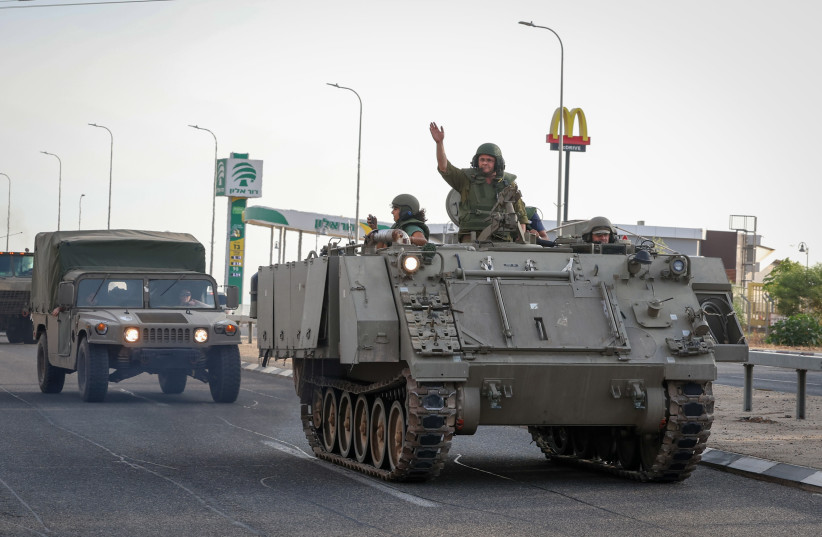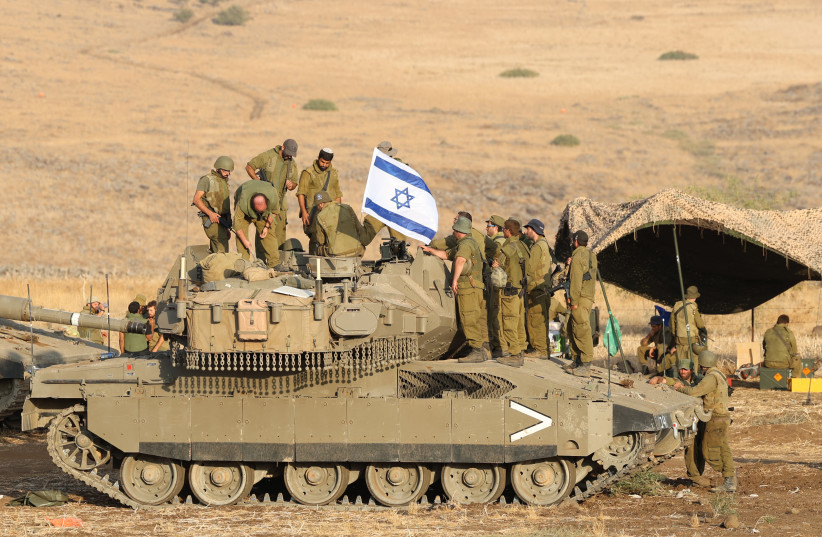Rocket fire from Lebanon and Syria, as well as threats from Iraq and Yemen joining the Hamas war on Israel.
SETH J. FRANTZMAN OCTOBER 11, 2023 01:00

The IDF said several launches from Syria into Israeli territory were identified.
The IDF said that “part of the launches crossed into Israeli territory and presumably fell in an open area.” Israel responded with artillery fire.
Meanwhile, near Gaza, IDF soldiers killed two terrorists in the area of Kibbutz Re’im and killed another two terrorists in the area of Kibbutz Mefalsim. In Lebanon, terrorists fired an anti-tank missile toward a military vehicle near Avivim. The conflict that Israel has prepared for appears to be emerging.
Incidents coming together
It is increasingly clear that a large number of incidents are coming together. This includes the horrendous October 7 invasion by Hamas that led to 29 breaches in the fence around Gaza and saw terrorists attack 20 communities. The full scale of the attack is still being understood but it is known that 1,000 people were murdered and many communities destroyed. Thousands were injured. Israel has retaken the border area and called up 300,000 people.
However, Hamas is now joined by terror groups in Lebanon and Syria. This included Hezbollah provocations over the last several days. In the past, Israel has seen this phenomenon of attacks from Lebanon, Syria, and even from Iraq during the May 2021 war. Israel also saw earlier this year rocket fire from Lebanon during the Passover holiday, and over the summer, there were increasing attacks from Jenin.

So far the attacks in the north have been small. These are similar to what would have been referred to as a “battle day” before the 2006 war. However, the slow drumbeat is growing of concerns about a multi-front conflict. Israel has prepared for this scenario over the years.
However, as was made clear by the Hamas invasion and massacre around Gaza, the preparations may exist, but all plans must also make contact with the enemy at some point. The enemy in Gaza used a complex combination of attacks to strike at IDF posts and observation sites, and then to strike at communities.
More video evidence emerges every day of what they did, including the horrors, but also how terrorists wandered up to communities, slowly waiting to see if they could find victims.
Meanwhile, the Iran-backed Houthis in Yemen have also warned they may join the war on Israel. Reuters reported that “Yemen’s Houthi leader Abdel-Malek al-Houthi said on Tuesday that if the US intervenes in the Gaza conflict directly, the group will respond by firing drones and missiles, and take other military options.” The Houthis also claimed that “there are red lines when it comes to Gaza.” They may be willing to coordinate with other groups.
Iranian-backed groups in Iraq are also making threats.
Hadi al-Amiri of the Badr organization has threatened to intervene if the US intervenes. “If they intervene, we would intervene…if the Americans intervened openly in this conflict…we will consider all American targets legitimate … and we will not hesitate to target it.”
In the past, Asaib Ahl Al-Haq, a terrorist group, has threatened Israel and its leader went to Lebanon several years ago to make common cause with Hezbollah. Iran has also entrenched in Syria and moves weapons to Hezbollah via Syria.
In the last years, it appears the Iran axis has also operationalized other units in Syria and Lebanon. Hamas, for instance, has sent its leadership to Lebanon to coordinate. This is part of Iran’s effort to “unify” various fronts against Israel.
Iran also operationalizes small terror groups in Syria that it uses as cut-outs for its larger threats. It prefers to use small groups so Iran has plausible deniability for these efforts. In some ways, Iran’s policy looked in the past like a lot of little attacks, but this “thousand paper cuts” strategy has now bloomed.
Content retrieved from: https://www.jpost.com/israel-news/article-767646.